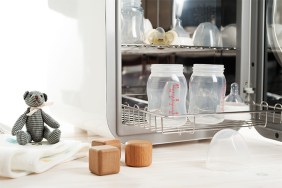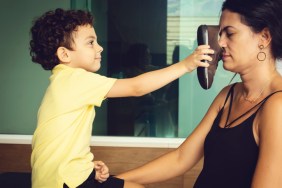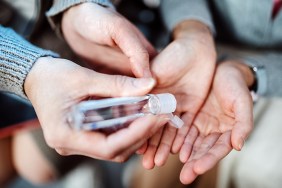Let’s face it, being a pediatrician and a mom of three boys, I am surrounded by germs. I basically can’t escape them at home or at work, which is why I have made hand hygiene a huge part of both my home and work life. For some reason, my boys also seem to put their hands in their mouths a lot. One of the things that I have definitely changed over the last thirteen years of parenting is that I have definitely moved toward more natural, chemical-free methods of illness prevention. My boys know the second they walk in the door their shoes come off and they go to wash their hands. When we are out and about and one of them is suddenly “starving” with no water to wash in sight, I look for other methods of germ prevention, such as natural hand sanitizer. Does natural hand sanitizer actually work? Definitely, if used the right way. Here are some tips for preventing your kids from catching “whatever is going around,” and encouraging good hand hygiene.
1. Educate your kids about good hygiene. Teach them to wash their hands with soap and water and sing the happy birthday song twice while doing so.
2. Choose the right hand sanitizer when on-the-go. For my boys, I choose an organic hand sanitizer with greater than 60 percent alcohol. This way I know they are not replacing dirty hands with hands filled with potential toxicants. Aviod hand sanitizers with triclosan and parabens, as well as those labeled antibacterial; they may promote antibiotic resistance.
3. Don’t forget to wash your own hands. Being a good role model and washing your hands is very important. The whole family can all wash up together when coming in the house and before meals. By making this part of your daily routine and doing it with your child, they are more likely to continue with this practice.
4. Make it easy for your kids to wash up. Make it easy for your little one to wash their hands by keeping a stool near the sink and having hand sanitizer available. My five year old takes hand sanitizer with him to school and camp in his backpack. This way, if he needs to wash his hands but there is no water around, he’s got it readily available to him. We chose a fun looking hand sanitizer together that clipped to the backpack so that I had his buy-in as well. With younger kids, it is important to make sure that hand sanitizers are out of reach as swallowing them can be toxic.
5. Read books about the importance of hand washing. It’s a good way to get messages across without being to in your face or making your child feel “forced” to do something. Pick out some age appropriate books about hand washing and germ prevention and incorporate them into your book rotation.
6. Make it fun to wash away the germs. Choose fun colored soaps. My boys love to use the crayon soaps in the bathtub so they can color and get squeaky clean all at once. You’ll avoid the battle and get rid of the nasties that can make your family sick.
Even the most diligent moms can’t prevent all illnesses, but a little prevention can go a long way. Making clean hands part of your everyday routine makes it easier and more natural for families. By giving your child choices such as what color or smell of soap to use, you empower them to become part of the hand-cleaning process and they’ll be less likely to resist your efforts.
Source: When & How to Use Hand Sanitizer, Centers for Disease Control and Prevention
Read More About Colds & The Flu:
- Is It Safe to Get a Flu Shot While You Are Pregnant?
- 9 Cold & Flu Myths Debunked
- DIY Sore Throat Gummies Will Help Conquer Your Cold








